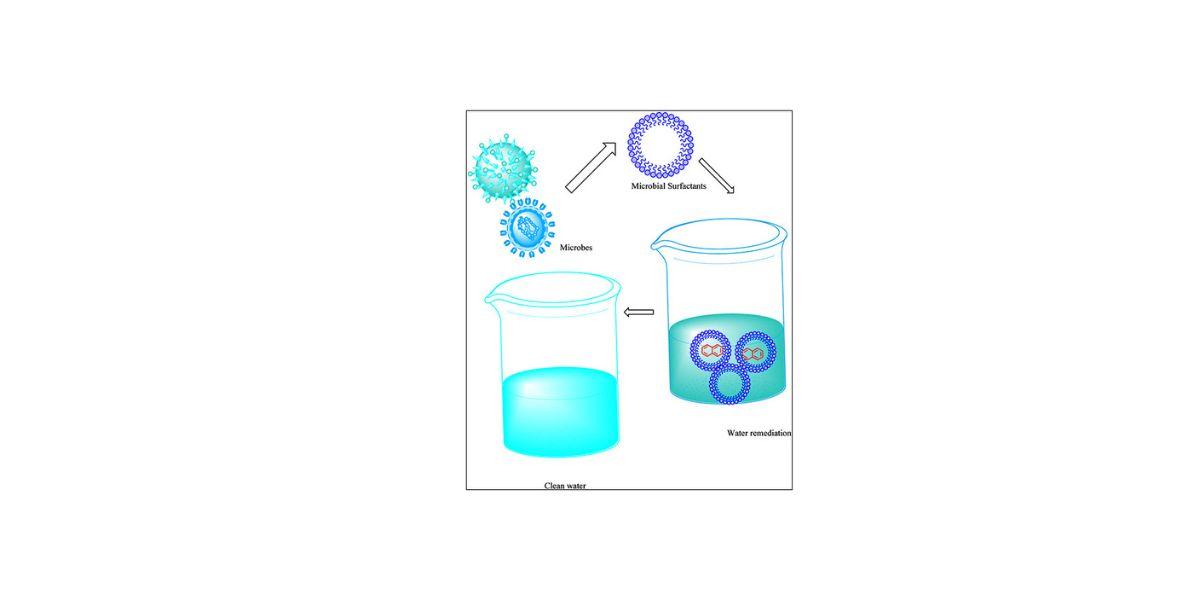Biosurfactants: Nature's Solution for a Cleaner Future

In our quest for sustainable alternatives to chemical products, biosurfactants have emerged as a revolutionary class of biomolecules. These naturally occurring, surface-active compounds are produced by microorganisms, plants, and even some marine organisms, offering an eco-friendly replacement for synthetic surfactants. As industries worldwide strive to reduce their environmental impact, biosurfactant are gaining significant attention for their biodegradability, low toxicity, and versatile applications.
What Are Biosurfactants?
Biosurfactants are amphiphilic molecules, meaning they contain both hydrophilic (water-loving) and hydrophobic (water-repelling) components. This unique structure allows them to reduce surface tension, stabilize emulsions, and enhance solubility—functions traditionally performed by petroleum-based surfactants.
Key Characteristics of Biosurfactants:
-
Biodegradable: Unlike synthetic surfactants, they break down naturally without harming ecosystems.
-
Low Toxicity: Safe for humans, animals, and aquatic life.
-
High Stability: Effective under extreme temperatures, pH levels, and salinity.
-
Renewable: Produced from microbial fermentation or plant-based sources.
Types of Biosurfactants
Biosurfactants are classified based on their chemical structure and microbial origin:
-
Glycolipids (e.g., Rhamnolipids, Sophorolipids) – The most widely studied, used in detergents, cosmetics, and bioremediation.
-
Lipopeptides (e.g., Surfactin) – Known for their antimicrobial properties, useful in pharmaceuticals.
-
Phospholipids – Found in cell membranes, used in food and medical industries.
-
Polymeric Biosurfactants (e.g., Emulsan) – Effective in oil recovery and environmental cleanup.
-
Particulate Biosurfactants – Assist in microbial adhesion and biofilm formation.
Why Are Biosurfactants Important?
1. Environmental Sustainability
-
Reduce Pollution: Unlike synthetic surfactants, biosurfactants degrade naturally, preventing long-term environmental damage.
-
Oil Spill Cleanup: They break down hydrocarbons, making them ideal for marine and soil remediation.
-
Soil Detoxification: Help remove heavy metals and pesticides from contaminated land.
2. Industrial and Commercial Benefits
-
High Performance: Work effectively in harsh conditions (e.g., high salinity, extreme pH).
-
Versatility: Used in agriculture, food processing, cosmetics, and medicine.
-
Consumer Safety: Non-irritating and hypoallergenic, making them ideal for personal care products.
3. Economic Potential
-
Waste-to-Value Production: Can be synthesized from agricultural byproducts, lowering costs.
-
Growing Market Demand: Increasing consumer preference for green products drives industry adoption.
Applications of Biosurfactants
1. Environmental Remediation
-
Oil Spill Degradation: Enhances microbial breakdown of petroleum hydrocarbons.
-
Wastewater Treatment: Removes toxic metals and organic pollutants.
2. Agriculture
-
Biofertilizers & Biopesticides: Improve soil health and crop yield.
-
Plant Disease Control: Suppress fungal and bacterial pathogens.
3. Food Industry
-
Emulsifiers & Stabilizers: Used in dairy, bakery, and processed foods.
-
Anti-Microbial Agents: Extend shelf life by preventing spoilage.
4. Cosmetics & Personal Care
-
Gentle Cleansers: Found in shampoos, soaps, and skincare products.
-
Moisturizing Agents: Enhance skin hydration without irritation.
5. Pharmaceuticals & Medicine
-
Drug Delivery Systems: Improve solubility of poorly absorbed drugs.
-
Antimicrobial & Anti-Cancer Agents: Show promise in therapeutic applications.
6. Petroleum Industry
-
Enhanced Oil Recovery (EOR): Increases extraction efficiency from reservoirs.
-
Pipeline Maintenance: Prevents corrosion and sludge buildup.
Challenges in Biosurfactant Production
Despite their advantages, widespread adoption faces hurdles:
-
High Production Costs: Microbial fermentation can be expensive compared to synthetic surfactants.
-
Scalability Issues: Industrial-scale production requires optimized strains and processes.
-
Market Competition: Synthetic surfactants dominate due to lower costs and established supply chains.
Future Prospects
1. Technological Advancements
-
Genetic Engineering: Modifying microbes for higher yield and efficiency.
-
Waste-Based Production: Using food and agricultural waste as feedstock.
2. Policy & Industry Trends
-
Government Incentives: Subsidies for green chemistry adoption.
-
Corporate Sustainability Goals: Major brands shifting to biosurfactant-based products.
3. Emerging Applications
-
Nanotechnology: Biosurfactant-coated nanoparticles for targeted drug delivery.
-
Bio-Based Manufacturing: Integration into green industrial processes.
Final THoughts
Biosurfactants represent a transformative shift toward sustainable industrial and environmental solutions. Their biodegradability, safety, and multifunctionality make them superior to traditional surfactants. While challenges remain in scaling production, ongoing research and technological advancements are paving the way for broader adoption.
- Art
- Causes
- Best Offers
- Crafts
- Dance
- Drinks
- Film
- Fitness
- Food
- Games
- Festival
- Gardening
- Health
- Home
- Literature
- Music
- Networking
- Other
- Party
- Religion
- Shopping
- Sports
- Theater
- Wellness



